Par frying: an interesting industrial mode of frying And some interesting industrial edible oil products
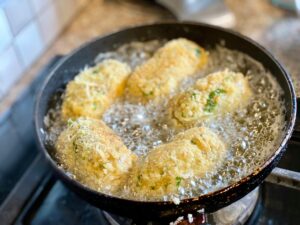
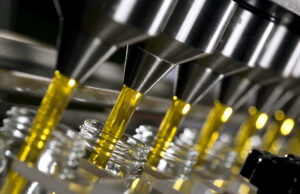
Though the essential similarities between domestic cooking with oils and industrial processing are obvious, it would be surprising if the industry didn’t do anything different beyond scale, continuous processes and automation. That is indeed the case:
- Industry uses them more technically with emphasis on cost, conservation, compliance with law and suitability for each process.
- Industry uses refined oils for larger, if somewhat bland appeal.
- Industry has some special products and processes that are beyond the scope of homes; this post is an ode’ to that.
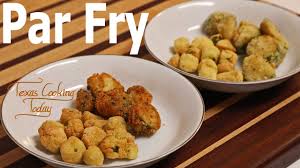 Par frying – a special industrial frying process: This term is used when items like stuffed and plain paratha (typically, alu paratha), French fries, potato pieces (typically wedges and fingers), samosa, coated and direct vegetables etc. are quickly partially fried, wrapped in packaging and immediately frozen. They stay like this in transit and storage at the destination. Before use, they are taken out, unpacked and immediately ‘finish-fried’ before serving. India exports humungous amounts of such goods to the west. At home, this is rarely required but industrially, it delivers ‘Indian’ staples to homesick Indians – especially Americans – who like to think that they are too busy or important to do it themselves.
Par frying – a special industrial frying process: This term is used when items like stuffed and plain paratha (typically, alu paratha), French fries, potato pieces (typically wedges and fingers), samosa, coated and direct vegetables etc. are quickly partially fried, wrapped in packaging and immediately frozen. They stay like this in transit and storage at the destination. Before use, they are taken out, unpacked and immediately ‘finish-fried’ before serving. India exports humungous amounts of such goods to the west. At home, this is rarely required but industrially, it delivers ‘Indian’ staples to homesick Indians – especially Americans – who like to think that they are too busy or important to do it themselves.
The science is not difficult to figure out. Initial half-frying reduces the water activity to a safe level, sterilizes the product, gives the product surface a water-repellent character and the wrapping seals it all in. Final frying takes care of all the frozen moisture before it migrates all around and gives a feel of a fresh fried dish.
 Samosa remain a delicious challenge; most of cooking-cum-drying happens to the outer pastry and the moist stuffing – presumed to have good microbial quality – remains virtually unaffected. The stuffing has to be moist enough to have a soft bite but that means a possibility of moisture migration to the outer pastry turning it soggy and vulnerable to mould growth. You must have noticed that samosa (and, for that matter, the flaky, refined flour pastry enclosing stuffing) is kept in heated glass chambers at halwai places. A typically Indian jugaad for this was the tungsten filament incandescent bulb in the chamber radiating and convecting heat! Such bulb-heated displays are rare, now that those bulbs have vanished. But long live the par-fried samosa! You may also have noticed that samosa are rarely packed full to minimize moisture-pastry contact.
Samosa remain a delicious challenge; most of cooking-cum-drying happens to the outer pastry and the moist stuffing – presumed to have good microbial quality – remains virtually unaffected. The stuffing has to be moist enough to have a soft bite but that means a possibility of moisture migration to the outer pastry turning it soggy and vulnerable to mould growth. You must have noticed that samosa (and, for that matter, the flaky, refined flour pastry enclosing stuffing) is kept in heated glass chambers at halwai places. A typically Indian jugaad for this was the tungsten filament incandescent bulb in the chamber radiating and convecting heat! Such bulb-heated displays are rare, now that those bulbs have vanished. But long live the par-fried samosa! You may also have noticed that samosa are rarely packed full to minimize moisture-pastry contact.
(Some of you may have heard of ‘flash frying’ and wondered what it is. Essentially, it is frying – usually the deep mode – at a higher temperature than usual to minimize cooking to the core and channel formation and cook the outer skin and just below it. This clearly minimizes oil take-up, creates a ‘hard outer case’ and is ruled out for items that require patient cooking to the core e.g. large chicken and mutton pieces. If you want flash frying explained in detail, feel free to ask for it; sensitized with frying in general thru these posts, you will be able to enjoy it. French fries are flash fried; cut a finger with a blade and you will see a browner, harder outer ‘case’ and inner, relatively moist ‘body’. Chinese cooking uses it extensively to retain freshness and moistness of vegetables.)
Now some special oil/fat products that we are familiar with.
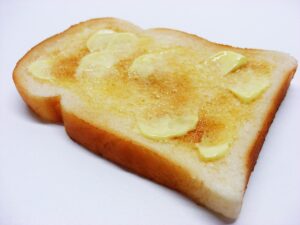 The delightful, golden yellow, salty, dairy butter: In India, dairy butter (which, to the mammoth Cooperative’s immense credit, almost always means ‘Amul’) has, by law, a standard composition. Your pack contains about 80% fat, 16% water, about 2.5% salt and the rest is milk solids, and added color. Water is trapped in a natural emulsion of water within the fat (w/o) and does not come out during spread on bread or roti and evaporates when heated with some spattering because it is escaping from ‘bondage’. Beginning of browning of milk solids is an indication of moisture level reducing fast. Frying in butter is a bad idea, it does not start till moisture has evaporated and most of the delicate flavor is lost. Use ghee when you want ‘richness’ in the dish, then too, let a refined oil do the hot work and add ghee during the last minute.
The delightful, golden yellow, salty, dairy butter: In India, dairy butter (which, to the mammoth Cooperative’s immense credit, almost always means ‘Amul’) has, by law, a standard composition. Your pack contains about 80% fat, 16% water, about 2.5% salt and the rest is milk solids, and added color. Water is trapped in a natural emulsion of water within the fat (w/o) and does not come out during spread on bread or roti and evaporates when heated with some spattering because it is escaping from ‘bondage’. Beginning of browning of milk solids is an indication of moisture level reducing fast. Frying in butter is a bad idea, it does not start till moisture has evaporated and most of the delicate flavor is lost. Use ghee when you want ‘richness’ in the dish, then too, let a refined oil do the hot work and add ghee during the last minute.
Butter fat (or milk fat or ghee) is one of the most complex natural lipids; interestingly, it is the only natural fat in vegetarian diet that contains more than traces of cholesterol and trans fatty acids. Ghee made from butter by water evaporation also contains traces of Conjugated Linoleic Acid (CLA) that has been credited with some exceptional nutraceutical properties; in the West CLA capsules are a popular ‘pop pill’ that makes people feel good about their nutrition uptake. So what’s the verdict? We will see in a dedicated post. But the delight of butter on daal tadka or bajare ki roti or a hot bread slice toast need not be abandoned in most cases if accompanied by physical activity, moderation and mindfulness.
Dairy butter is made by first separating ‘cream’ (in a way, milk highly enriched in fat by exploiting the density difference between watery and fatty parts or milk with 30 – 40 % fat) and then ‘beating’ it till the fat globules coalesce by overcoming the emulsifying membranes around them. Some water remains trapped as emulsion, now as water-in-oil to give you ‘white butter’. This ‘phase reversal’ frees most of the water which separates out as ‘buttermilk’ and is drained out. Addition of salt and color and some mechanical working completes the process before it is sent for packing at a controlled temperature. Obviously, this is a purely physical process that respects the integrity of milk and fat. Versions of butter expected from Amul by this blog: low-Na, spreadable-from-the-fridge and flavored. Their recently launched garlic butter is a bit tame in garliciness.
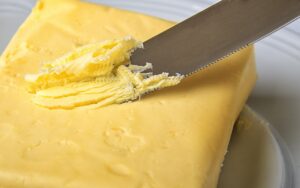 Margarines and ‘spreads’: Science has conjured up a way of making butter analogues – margarines – made from water, special types of fats, some butter-like additives and an emulsifier that takes the place of natural, elaborate emulsifier ‘membrane’ in dairy butter. Obviously, since they ‘start from scratch’, they have the freedom to manage its composition practically limitlessly. In India dairy butter type ‘block’ margarine with butter-like composition (but with special fat in place of milk fat) and soft, ‘tub’ margarine with similar composition are found. In the west the fat content of such products can go as low as 5% (in which case, it is a pourable liquid) and these lower fat products are called ‘spreads’ or ‘bread spreads’. Margarine is imitation butter; such very low fat ‘spreads’ are an abomination!
Margarines and ‘spreads’: Science has conjured up a way of making butter analogues – margarines – made from water, special types of fats, some butter-like additives and an emulsifier that takes the place of natural, elaborate emulsifier ‘membrane’ in dairy butter. Obviously, since they ‘start from scratch’, they have the freedom to manage its composition practically limitlessly. In India dairy butter type ‘block’ margarine with butter-like composition (but with special fat in place of milk fat) and soft, ‘tub’ margarine with similar composition are found. In the west the fat content of such products can go as low as 5% (in which case, it is a pourable liquid) and these lower fat products are called ‘spreads’ or ‘bread spreads’. Margarine is imitation butter; such very low fat ‘spreads’ are an abomination!
Margarine and spread making technology is elegant and theoretically creates the possibilities of incorporating special attributes in the fat part and special ingredients in both the fat and water ‘phases’. In the west, milk fat is not necessarily significantly more expensive than the margarine and spread fats and hence the market price of the analogues is not attractively lower than butter. It is often higher when they claim special attributes like ‘cholesterol lowering’ or ‘omega rich’. They sell on the back of those ‘usp’s there but without setting the market on fire. In India they have had a chequered history of launches, failures, transient successes, withdrawals and a limited, long term existence marked largely by survival.
Let’s hope that, some day, a margarine will come along that will have lower fat content with lower calories (e.g. thru use of diacylglycerols or di-glycerides and fat mimics), physiologically beneficial ingredients (e.g. Conjugated Linoleic Acid, palm-derived tocopherols, tocotrienols and carotenes, phytosterols) and lower salt-content. They can charge for that!
 Bakery shortenings and margarines: We already know what shortenings (ref post 31, Edible oils – the champion cooking aids: Part I, Oils as ingredients and dish accompaniments) and margarines are. Industrial bakery shortenings and margarines are a world of mind-boggling variety; let’s just touch some aspects that are interesting and relevant to India.
Bakery shortenings and margarines: We already know what shortenings (ref post 31, Edible oils – the champion cooking aids: Part I, Oils as ingredients and dish accompaniments) and margarines are. Industrial bakery shortenings and margarines are a world of mind-boggling variety; let’s just touch some aspects that are interesting and relevant to India.
The principal difference between bakery shortenings and margarines is that the latter contain emulsified (w/o) water which will obviously vaporize, escape from the fat-matrix and, in the process aid in ‘fluffing up’ the product during baking. These shortenings are ‘plastic fats’, so called because when ‘pushed’ by a knife, they do not resist but ‘give in’ and spread out. Your whole wheat roti dough is a lot less plastic.
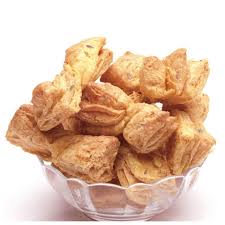 Multiple thin-layered, baked, puffed, light, refined flour rectangles are popular in India simply as ‘khari’ and are made by preparing large sheets of dough, spreading shortening or margarine over them, sprinkling flour on the fat and folding the sheets – every time repeating the surface coatings. After several foldings, the reduced-size block of dough is cut into pieces and baked. Because of the ‘interruptions’ between sheets, the layers puff up and separate out while remaining joined at the edges where the cutting press has caused fusing. Maddeningly delicious but seriously flawed nutritionally (salt, high melting fat, baking soda, refined flour), their ‘puff pastry’ version has stuffed spicy filling and sells like ‘hot puffs’. What makes all this possible is specially formulated fat or emulsion (margarine) whose small quantities spread out over vast sheet areas.
Multiple thin-layered, baked, puffed, light, refined flour rectangles are popular in India simply as ‘khari’ and are made by preparing large sheets of dough, spreading shortening or margarine over them, sprinkling flour on the fat and folding the sheets – every time repeating the surface coatings. After several foldings, the reduced-size block of dough is cut into pieces and baked. Because of the ‘interruptions’ between sheets, the layers puff up and separate out while remaining joined at the edges where the cutting press has caused fusing. Maddeningly delicious but seriously flawed nutritionally (salt, high melting fat, baking soda, refined flour), their ‘puff pastry’ version has stuffed spicy filling and sells like ‘hot puffs’. What makes all this possible is specially formulated fat or emulsion (margarine) whose small quantities spread out over vast sheet areas.
Lower calorie cooking oils: That mono- and di-glycerides (or mono- and di-acylglycerols) have lower calories per gram has been known and, though their volatility is more than that of triglycerides (tri-acylglycerols), they essentially behave like edible oils. Japan has a culture of such cooking media with lower calories and are called ‘DAG oils’ – DAG = diacylglycerols. They have surprisingly not spread into the world despite an attractive value proposition. Perhaps the price is a dampener and families with deep-rooted oil preferences would not be too keen. It must be noted that Japan has one of the lowest instances of CVD, though attributing that even mainly to DAG is out of question.
 Refined red palm oil: We have been introduced to this product in Post no. 17, Edible oils: an introduction – Understanding what they are. Though costlier than conventional, pale yellow colored refined palm oil, it a powerful product that deserves wide adoption in select ways of cooking. And if dark color in it is accepted as ‘justified by nurtrition’, why do we bend over backwards to bleach oils during refining? A point to ponder.
Refined red palm oil: We have been introduced to this product in Post no. 17, Edible oils: an introduction – Understanding what they are. Though costlier than conventional, pale yellow colored refined palm oil, it a powerful product that deserves wide adoption in select ways of cooking. And if dark color in it is accepted as ‘justified by nurtrition’, why do we bend over backwards to bleach oils during refining? A point to ponder.
 Frozen desserts: ‘Amul’ rightly and understandably insists that ‘frozen desserts’ are not ice-creams. Indeed, they contain some specialty fats in place of dairy or milk fat. A lot like margarines and can be called ‘ice-cream analogues’. And, a lot like margarines, should be cheaper than dairy ice-creams but often are not. Perhaps, the process of incorporating an alien fat into the formulation (remember: milk fat is already naturally entrenched in the formulation when making ice cream) takes its toll. The only saving grace is that being ‘tailor-made’, the fat can impart a slightly differentiated eating experience than ice-creams and can be value-added. But that is hair-splitting really!
Frozen desserts: ‘Amul’ rightly and understandably insists that ‘frozen desserts’ are not ice-creams. Indeed, they contain some specialty fats in place of dairy or milk fat. A lot like margarines and can be called ‘ice-cream analogues’. And, a lot like margarines, should be cheaper than dairy ice-creams but often are not. Perhaps, the process of incorporating an alien fat into the formulation (remember: milk fat is already naturally entrenched in the formulation when making ice cream) takes its toll. The only saving grace is that being ‘tailor-made’, the fat can impart a slightly differentiated eating experience than ice-creams and can be value-added. But that is hair-splitting really!
Some possible game-changing products: (Ref post 4, Industrial processed foods: Part I, Their evolution and present status and post 17, Edible oils: an introduction, The multi-faceted personality of our cooking oils.)
- Smart cooking oil blends that combine complementary attributes of 2 or more natural oils, and, in the process, also reduce the price. Some typical examples: 1. 70 % unrefined groundnut oil + 30 % refined soybean oil as all-purpose cooking oil. 2. 70 % refined soybean oil + 30 % degummed but unrefined soybean oil for all non-frying uses. (Get used to a slightly nutty taste!). 3. 70 % red refined palm oil + 30 % refined soybean oil for the West.
- Red refined palm oil.
- Pre-spiced, specially formulated and value-added edible oil that can convert assorted boiled vegetables into a ready-to-eat, nutritious subji dish in a minute.
- Skim Milk Powder and refined palm oil re-combined into a milk analogue for the poorer sections.
- Versions of unrefined soybean oil for selected modes of cooking.
- Partially, selectively hydrogenated soybean oil as a source of Conjugated Linoleic Acid (CLA) that can be blended to an acceptable TFA level and offered as a value-added cooking oil. (It is possible to externally track CLA development during partial hydrogenation and hence, the CLA maxima. Blended with regionally preferred oils – unrefined olive and groundnut and refined or unrefined coconut – to lower tfa, it can be a cooking oil doubling up as a cheap source of otherwise costly CLA.
- Blends of hydrogenated (to a low TFA level thru tracking during the process) and unhydrogenated oils with acceptable TFA levels.
Notes: 1. Molded bar chocolates, frozen desserts, salty crackers and potato wafers are seen, respectively, as cocoa, milk, flour and potato products despite oils’/fat’s critical roles in them. They have all been dealt with in earlier posts. 2. Conjugated Linoleic Acid (CLA) is a special nutraceutical product; you will encounter it in a dedicated post on hydrogenation of edible oils for food applications.
Next Post
Ideal oils for each cooking mode
General considerations
Visit Disclaimer.
2 thoughts on “Par frying: an interesting industrial mode of frying And some interesting industrial edible oil products”
I admire your piece of work, regards for all the interesting content.
I am typically to running a blog and i really recognize your content. The article has really peaks my interest. I am going to bookmark your site and maintain checking for new information.